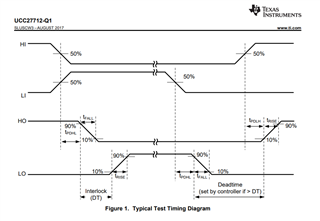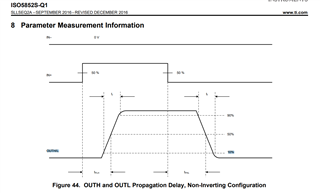Other Parts Discussed in Thread: ISO5852S, UCC27712
Tool/software:
in the UCC27712-Q1 datasheet mentions below diagram for propagation delays measurement. for example tPDHL is measured from PWM 50% to HO 90%. similarly tPDLH is measured from PWM 50% to HO 10% . where as in ISO5852s datasheet propagation delays are measured from PWM 50% to OUTH/L 50% (see the below screen shot from ISO5852s datasheet). why there is a difference .



